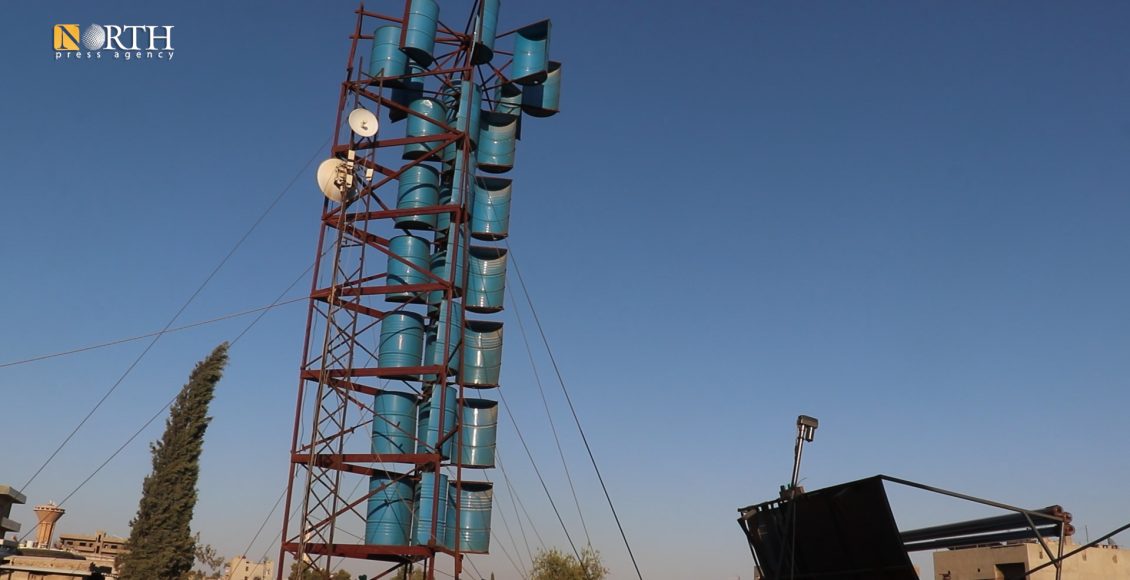QAMISHLI, Syria (North Press) – Alan Haj Ali, 32, has dedicated over four years to building a wind turbine, driven by a relentless determination despite the scarcity of materials in his region.
Utilizing a mix of simple tools and components he painstakingly waited months to acquire, Haj Ali has been developing a wind turbine to generate electricity for his home.
Residing in Qamishli in northeastern Syria, Haj Ali’s efforts have focused on harnessing wind power to provide a sustainable energy source. Even now, he continues to refine and enhance his wind turbine.
At the western entrance of Qamishli, near the Hilaliya neighborhood, you can easily spot his creation: half-cut barrels mounted on a metal rod, turning steadily in the breeze.

Passion for inventing
Haj Ali, a devoted father of three, credits his passion for invention with driving him to design a device to generate electricity. His deep-seated love for creating something new and unique fueled his ambition.
In an interview with North Press, Haj Ali recounted his journey when he was studying geology at Aleppo University in 2011. However, when the Syrian war started, he had to leave and return to Qamishli.
Currently, Haj Ali is engaged in installing solar panels, surveillance cameras, and internet networks. During the initial COVID-19 lockdown in 2020, he found himself spending extensive time online, which sparked the idea of designing a wind turbine to convert wind energy into electricity.
Haj Ali began by sketching and designing the motor on paper, meticulously analyzing its potential based on the region’s wind conditions. However, there were no suitable motors available locally.
Undeterred, he devised a plan to create a motor with a permanent magnetic core, although the necessary materials were not locally accessible.
He reached out to friends in Germany, who helped by ordering the required parts from China and shipping them to Qamishli.
It took approximately three years of assembling, disassembling, and testing before Haj Ali successfully completed the motor. Once the motor was finalized, he proceeded to design the turbine body, creating several models to ensure they aligned with his vision.

Cost-effective solution
Designing the turbine body required a substantial investment, so Haj Ali opted for a cost-effective solution. He repurposed oil barrels, cutting them in half and assembling them into the turbine’s frame.
While he was installing the turbine on his rooftop, a particularly strong gust of wind caused him to lose his balance and fall, resulting in a broken arm. Despite this setback, Haj Ali’s enthusiasm for his project remained unshaken.
He clarified that his motivation for the project was purely driven by passion, not profit. The goal was to create something new and unique in the region, he explains.
Last winter, he successfully operated the turbine. He notes that at a wind speed of 17 km/h, it generates six amperes of electricity for the house. The more intense the wind, the more electricity it produces.
Haj Ali acknowledges that using this turbine in the city presents challenges, as strong winds could potentially damage the turbine or pose risks to nearby buildings.
However, he sees potential for the turbine in agricultural settings. He suggests it could be especially beneficial for farmers with wells equipped with pumps (excluding electric submersible pumps), offering a safer and more practical solution outside urban areas.

